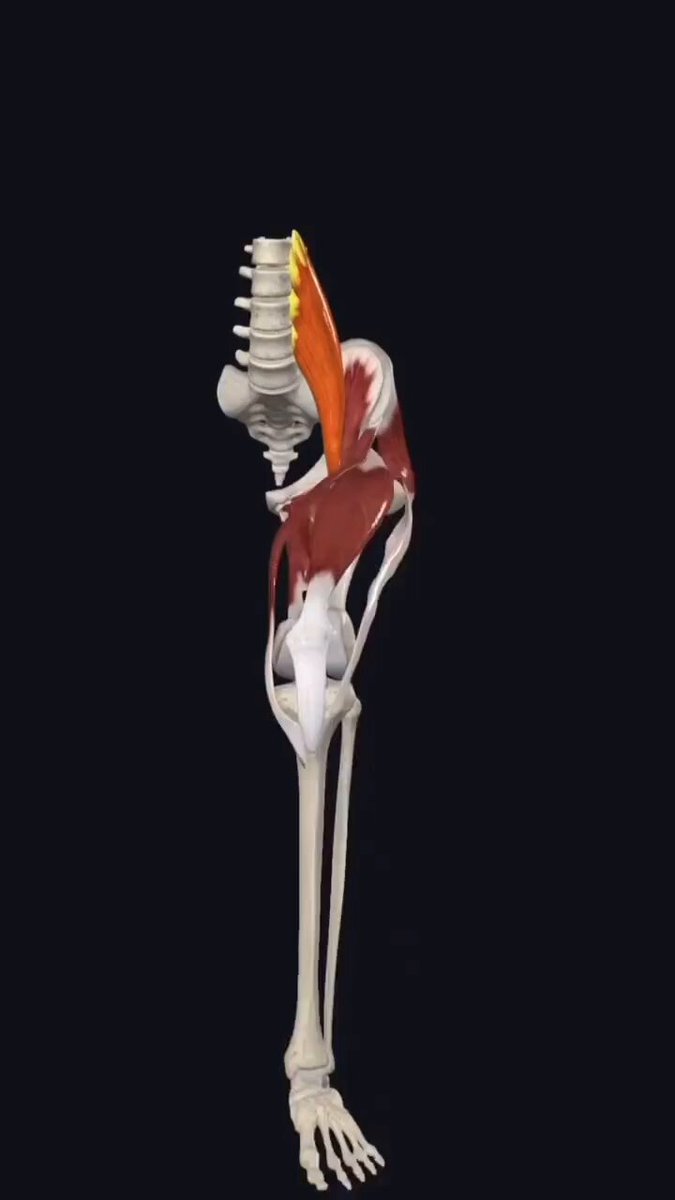Psoas Muscle and Anxiety: A Deep Dive
Jay McHale @mchale_in_flow on 13:00 2025-07-18 UTC
If your psoas muscle is tight, you'll feel anxious no matter what you try.
Most people don't realize that this one muscle can matter more than stress management.
Here are 10 cheat codes to train your psoas and feel like 20 again:
1. Do constructive rest pose for 10 minutes daily.

Replying to: 1946193346856382526
The psoas is the only muscle linking spine to legs, making it central to all movement and stability.
For the first exercise: lie on your back, knees bent, feet flat. Let gravity do the work.
Studies show it's the safest way to begin psoas relaxation.
Here's why this muscle controls your mental state:
Your psoas sends safety signals to your brain. When chronically tight, your brain thinks you're in constant danger.
This triggers anxiety, depression, and racing thoughts. It's not "all in your head," it's real physiology.
2. Never foam roll your psoas directly.
Your psoas sits next to your aorta, kidneys, and major nerves.
Aggressive pressure here can cause life-threatening injuries.
Zero peer-reviewed studies show safe protocols for deep psoas release with tools.
4. Do the wind-relieving pose correctly.
Lie on your back, draw one knee to chest, then slowly slide the other leg straight out.
Keep your pelvis stable - don't let your lower back arch.
This lengthens your psoas while maintaining proper alignment.
5. Do the couch stretch for 2 minutes daily
Most people think anxiety lives in their head.
But here's what 99% miss: Your psoas muscle is hardwired to your nervous system's alarm system.
When it's tight, your brain gets a constant signal that you're in danger...
6. Stand up every 30 minutes.
Prolonged sitting creates chronic psoas contraction.
Set a timer. Stand, breathe, move. This breaks the stress-tension cycle before it builds.
7. Practice the active supine stretch.
From constructive rest, hug one knee to chest, then slowly walk the other foot away from your hips.
Feel the stretch from your hip socket all the way up to your 12th thoracic vertebra.
Hold for 2-3 minutes each side.
8. Master the low lunge properly.
Step one foot forward, drop back knee down. Keep pelvis neutral by engaging your core.
Press your front foot into the floor and lengthen your spine.
Most people arch their back, negating the stretch.
9. Use systematic relaxation.
Lie in corpse pose with knees bent. Move your awareness through your body from head to feet.
This teaches your nervous system to release chronic tension patterns stored in your psoas.
10. Learn your nervous system signals.
Your psoas is wired to your reptilian brain. When tight, it signals constant danger.
Recognize fight-or-flight: shallow breathing, tense shoulders, tight gut.
Then use movement, breathing, or rest to reset.
Advanced technique: PNF stretching.
A 2022 study with 100 participants found PNF techniques were significantly more effective than other methods.
Contract for 10 seconds, then stretch for 10 seconds. 3 reps per side. This engages your nervous system for deeper release.
The key insight from all of this?
Your psoas affects your entire nervous system.
When you release physical tension systematically, your mind follows.
If you want to master your mind, master your body.
Start with just one stretch and add others over time.
Source: X post by Jay McHale (@mchale_in_flow) on July 18, 2025, discussing the psoas muscle and its relation to anxiety, with additional context from web searches on Cleveland Clinic, GoodRx, and My Bowen Therapy.